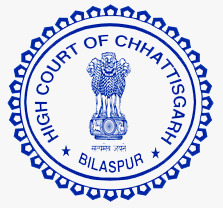History
Operation of judicial system in Raigarh state: – What we call the area of Raigarh and Kharsia tehsil today was known as the area of Raigarh state before the merger agreement i.e. merger of the state and was called Raigarh State. From Raigarh, the main branch of railway from Calcutta to Mumbai line passed, which is passing even today and its north-south and east-west areas were adjacent to the borders of Jabalpur, Jashpur, Dharamjaygarh, Sarangarh State and Jharsuguda, Sambalpur respectively. The foundation of Raigarh state, situated in the lap of beautiful nature in Purvanchal Chhattisgarh of Madhya Pradesh, was laid by Maharaja Madan Singh about 500 years ago. Later, Raja Bhupdev Singh, Chakradhar Singh and Lalit Singh assumed the throne. Music emperor Chakradhar Singh ji was born on the day of Ganesh Chaturthi in Samvat 1862. In the same sequence, “Ganesh Fair” is organized every year and during the same period, a music festival is organized in the name of Chakradhar Samaroh. The tehsils of Raigarh are Dharamjaygarh, Gharghoda, Sarangarh, Kharsia and Raigarh. After the Bhonsla kingdom was abolished in 1854 and came under the direct influence of British rule, the previous agreements and charters etc. with the princely states and zamindaris here were renewed. From 1864, two divisions of zamindaris of Chhattisgarh were formed. The zamindaris included in the first class were given the status of princely states and their rulers were called Raja or “Ruling Chief” and the zamindaris of the second class were called Zamindars.
Initially, among the 14 princely states located under Chhattisgarh, Kalahandi, Patna Raikhol, Bamra and Sonpur were Oriya speaking areas and Bastar, Kanker, Rajnandgaon, Chuhikhadan, Khairagarh, Kawardha, Raigarh, Sakti, Sarangarh were Hindi speaking princely states. In 1905, the five Oriya speaking princely states of Chhattisgarh were transferred to Bengal province and the five Hindi speaking princely states of Chhota Nagpur, Surguja, Jashpur, Udaipur, Korea and Changabhakhar were included in the Central Province and Berar. In this way, fourteen princely states once again remained in Chhattisgarh. Raigarh state has a very old history, but according to the information received, Mr. Bhupdev Singh Atmaj Dhanshyam Singh, who became the Judiciary Chief in 1894, was given the title of Raja Bahadur in the Tish regime and he was responsible for the administration of Raigarh state. Used to operate. After his death, his younger son Chakradhar Singh became the Raja Saheb of Raigarh. After whose death his son Raja Lalit Kumar Singh became the last king of Raigarh state. Whose state was merged by the Government of India through merger agreement. In the Raigarh state, for higher justice related arrangements, the Political Agent’s Court and later a High Court was established long ago, which is known as the Common High Court. With the establishment of the post of Registrar in the said court, Diwan Saheb, as a Justice, exercised the jurisdictional powers of the High Court.
Background of establishment of High Court – Common High Court was established with the main objective of bringing equality in the judicial system of the princely states of Orissa and Chhattisgarh included in the Eastern States Agency. The establishment of a single common High Court for the entire 39 princely states of the Agency was declared by Resident CP Hecock to be the cheapest and most effective on 25 January 1943. The Viceroy also sent to the Secretary of India the qualifications and number of judges – as per the prescribed qualifications. A person who has served as a District Judge in the British Provinces for at least 5 years or a retired Judge of the High Court of British India or a barrister with 15 years of experience in England or Northern Ireland who has practiced as a barrister in the High Court of India for 10 years. He was considered eligible to become its judge. Initially the number of judges for the Common High Court was fixed at three but later their number was increased to four. One of whom was the Chief Justice and the remaining were Sub-Justices. Muhammad Ismail, a retired Chief Justice of the Nagpur High Court, was appointed the first Chief Justice. After India’s independence, when he was sent by the Government of India to Pakistan as the Chief Commissioner of India, his vacant post was filled by M.B. Niyogi was appointed. Similarly, Raibahadur Rajkrishna and Amulya Kumari Bhaduri were appointed to the post of junior judges respectively, but later when their posts also became vacant, they were succeeded by Dr. J. N. Banerjee Bholanath Rai and Raibahadur Chintamani Acharya were appointed on 11 March 1946. Here also it is clear that the above mentioned judges were appointed by the Chairman of the Board of Control on the approval of the Resident. Salary and allowances of judges – They received salary and allowances determined by the Board of Control. The amount of salary and allowances was given by each state of the agency in the form of contribution as per their revenue.
Appointment and role of the Chief Justice – The position and role of the Chief Justice of the Common High Court was the most important. It was his responsibility to properly run and manage the work of the court; constituting a bench of judges to consider any case and dividing the work among them were also his important tasks.



